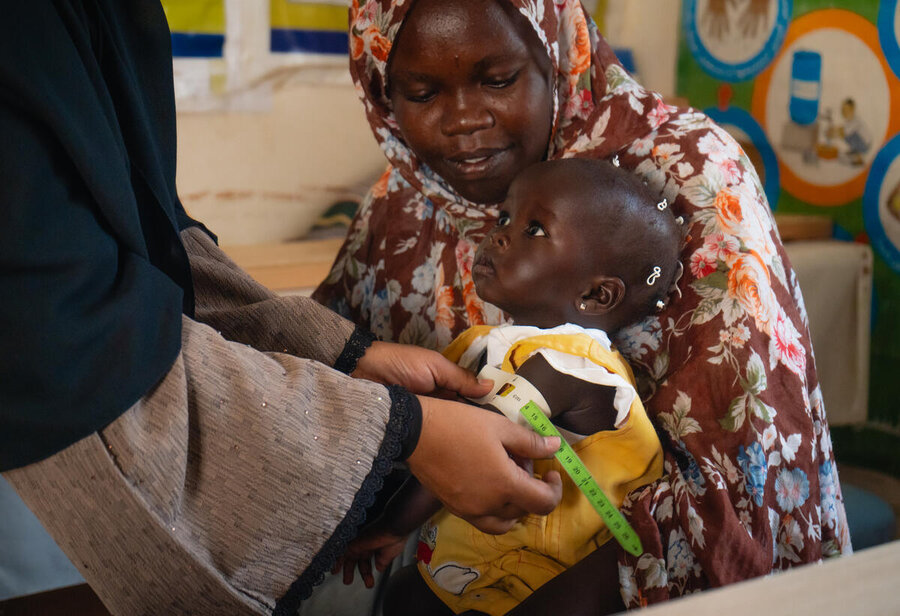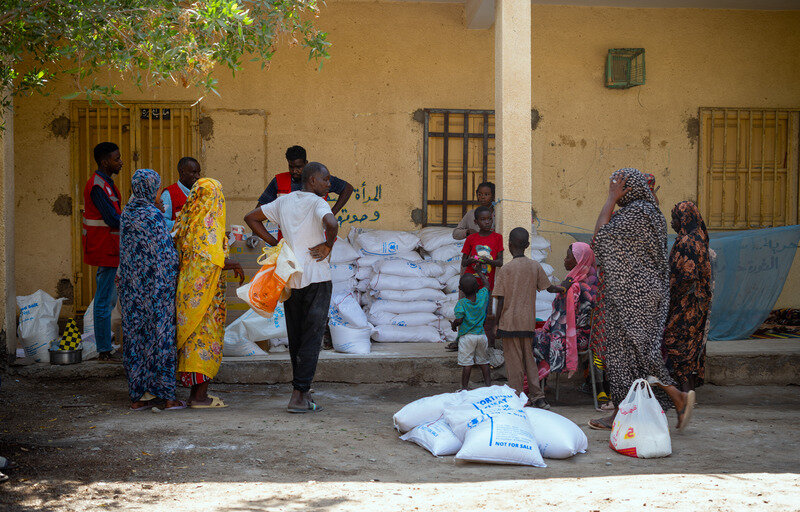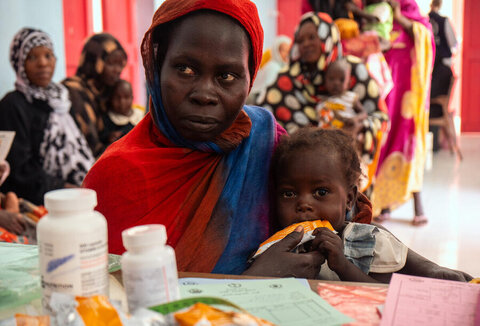Sudan updates: As fighting shifts east, WFP supports people displaced from Sennar

Read new IPC report on Sudan here
VIEW LATEST NEWS RELEASES | Last updates 27 June, 20 June
Clashes between the Sudanese Armed Forces (SAF) and the Rapid Support Forces (RSF) around Singa in Sennar state mark an alarming spread of the conflict east towards Port Sudan. Tens of thousands of people have been forced to flee, some for the second or even third time since the conflict started, as Sennar state hosts many families who first fled from Khartoum or Gezira state.
There is the potential that fighting in Sennar forces a large influx of people into South Sudan where humanitarian support for people fleeing Sudan’s war is already stretched to the limit. Reports suggest that many people intend to flee to South Sudan but there has not yet been a significant increase in arrivals, which remains at around 1,000 people per day into the South Sudanese border town of Renk. Routes may currently be too dangerous or people lack the means to move.

In June, the World Food Programme (WFP) significantly expanded operations as the threat of famine looms in 14 areas of Sudan, providing life-saving support to 1.4 million people – including nutrition, food and cash assistance – in that month alone. Last month also saw WFP expand the reach of its food assistance to 91 new distribution points across Sudan, providing vital life-saving aid to previously inaccessible communities in Blue Nile, Central Darfur, East Darfur, Gedaref, Gezira, Kassala, Sennar, South Darfur, South Kordofan, West Darfur, and White Nile.
Key recent developments
Sennar
- On 29 June, the RSF seized Singa, the capital of Sennar state, triggering mass displacement toward Blue Nile and Gedaref states. WFP has prepositioned more than 2,200 metric tons of food to provide immediate food assistance to newly displaced families. So far, WFP has supported almost 40,000 people who fled to Damazine (Blue Nile) and 3,000 people who have sought refuge in Kassala (Gedaref).
-
WFP is deeply concerned that increased fighting in the East could sever key routes for humanitarian assistance from Port Sudan and impact our ability to provide consistent assistance to refugees and vulnerable communities. With a risk of famine taking hold in parts of Sudan, it is imperative to sustain the delivery of life-saving aid across conflict lines and across borders.
Sudan hunger crisis: WFP calls for funds and humanitarian access to avert famine
New IPC report charts 755,000 people at the highest level of food insecurity in world’s biggest hunger crisis, World Food Programme warns
- WFP is moving food assistance from its Kosti hub to other distribution points in White Nile and South Kordofan states in anticipation of access to Kosti becoming more difficult in the next few weeks (due to clashes in neighbouring Sennar state). WFP plans to support over 417,000 people with a two-month ration in these locations.
- WFP’s South Sudan team is working with other UN agencies to prepare for a major influx of people fleeing to South Sudan from Sennar state. A major influx to Renk would quickly overwhelm existing response capacity. Transit camps are already overcrowded, the price of essential commodities is increasing. Meanwhile, the rainy season has started, making conditions even harder for families sheltering in makeshift tents.
Khartoum
- Khartoum is at risk of famine, yet humanitarian access is severely hampered by ongoing fighting. In June, WFP was able to provide treatment for moderate malnutrition to 3,800 children and mothers in Karrari locality. WFP also dispatched 97.2 metric tons of nutrition commodities to assist 5,190 people in Omdurman, including 4,000 IDPs from Umbadda.
- WFP also launched a self-registration pilot for Khartoum on 9 July to support the expansion of cash assistance via digital transfers.
El Obeid
- In the first week of July, WFP delivered 447 metric tons of food assistance to El Obeid, enough for 19,000 people for two months. This was the first crossline delivery from White Nile to North Kordofan since October 2023 and followed extensive negotiations with multiple actors on the ground. Crossline deliveries are critical for WFP to scale up the delivery of assistance in Sudan.
Darfur
- Distributions of assistance from the third WFP convoy to cross from Chad to Darfur via Tine are ongoing in East Darfur. The convoy transported enough assistance for 160,000 people to locations in East, West and Central Darfur.
-
A fourth convoy of trucks crossed Chad’s Tine crossing last week with food assistance for 165,000 people in North and Central Darfur. Three trucks from this 71-truck convoy were looted by unidentified armed men in Central Darfur, while distributions of the remaining assistance are ongoing in other parts of North and Central Darfur. The safe delivery of supplies must be guaranteed by all.
WFP’s emergency response in Sudan is made possible through contributions from our donors including the African Development Bank, Belgium, Canada, Cyprus, Czech Republic, the European Commission (ECHO), France, Germany, Greece, Hungary, Ireland, Italy, Japan, KS Relief, Kuwait, Luxembourg, Malta, Mohammed bin Rashid Al Maktoum Global Initiatives (MBRGI), Netherlands, Norway, South Korea, Slovenia, Spain, Sweden, Switzerland, Ukraine, the United Arab Emirates, the UN Central Emergency Relief Fund, and the United States of America.

